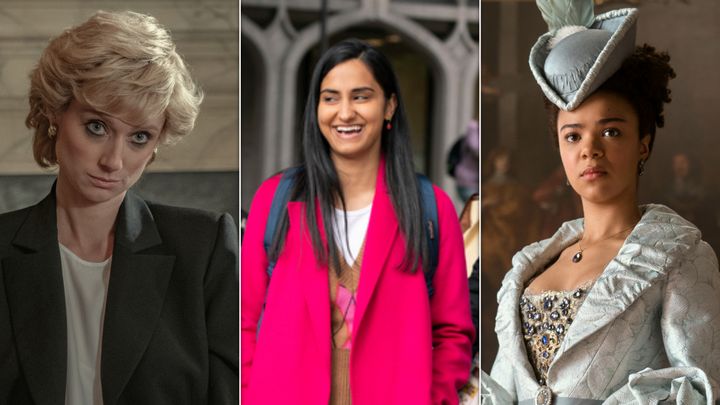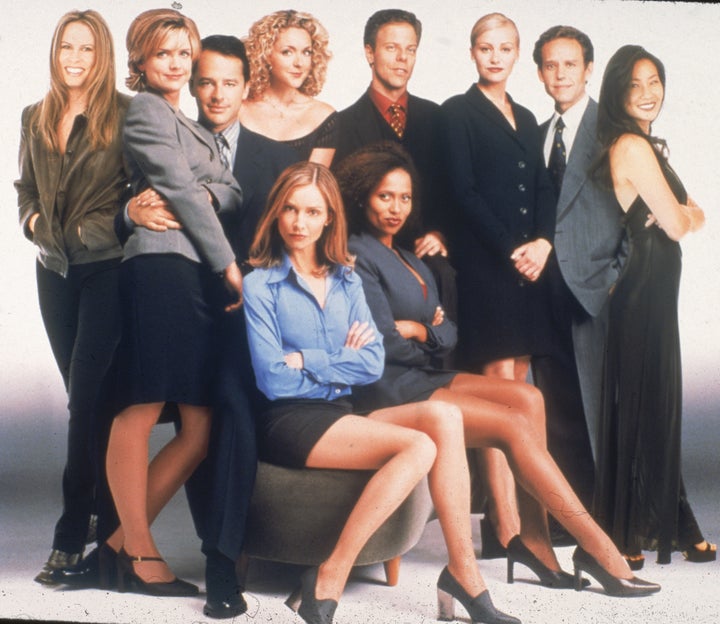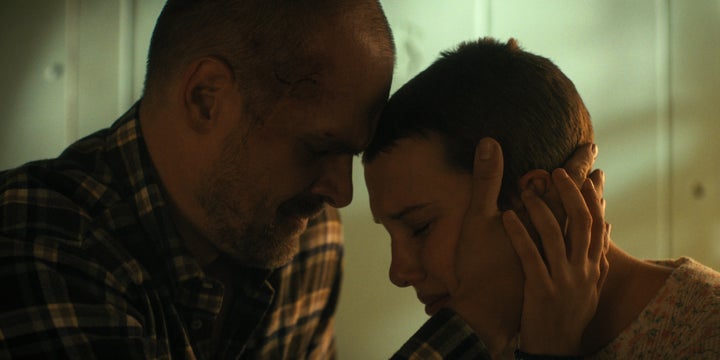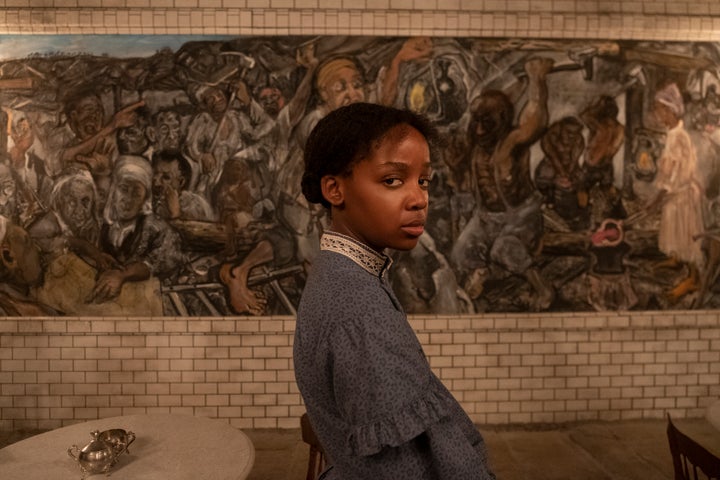
I began binge-watching TV series in the early 2000s, long before streaming existed and became the primary way that we consume new shows.
In middle school, I was always the last one awake at a sleepover, eyes glued to the screen, staying up to watch every episode on the next disc of a “One Tree Hill” DVD boxed set (because it was expensive, and I didn’t own the second season yet) or to watch reruns of “Degrassi” — the iteration where rapper Drake played Jimmy. In high school, I’d drive to one of the few remaining Blockbusters to rent shows that aired before I was old enough to stay up for prime time: “Felicity,” “The West Wing,” “Friends.” In senior year, my reward for completing my college applications was a Netflix subscription; my mom refused to let me subscribe earlier, convinced that I would never leave my room if I had access to the company’s extensive catalog.
Instead of fretting about little red envelopes, she should have been worried about streaming, which exploded a few months later during my first year of college. I spent most nights holed up in my room, catching up on current shows like “Psych” and “Pretty Little Liars” or discovering older series like “Ally McBeal.”

Really, the binge-watching I’ve done over the past two decades is not that different from the movie and TV marathons of my early childhood. The main difference is that binge-watching wasn’t the way I consumed new TV. Back then, it was the way I rewatched the shows I loved, caught up with past seasons of current series, and discovered older shows. Now, it’s the primary way that most of us watch new TV because few of us tune in to cable, and even those of us who do will often watch shows later via streaming platforms. For example, instead of watching “Grey’s Anatomy” every Thursday night, many of us wait for it to hit Hulu the next day, or for every episode to drop on Netflix in the summer.
The popularity and dominance of streaming has given us so many choices — from which services we use and which shows we watch to how we watch them (all at once or an episode at a time). Choice, and the instant gratification of our preferences, seem to be the biggest benefits of streaming. There’s no staying in (or staying up) to watch something live on cable, driving to Blockbuster, or waiting for a red envelope. Netflix even discontinued sending DVDs to customers in September.
The only thing that you can’t choose with streaming is when and how the next season of a show will be released. Most times, you don’t even know if a new show that you love will be renewed for another season. In fact, 46% of Americans will sometimes or always wait for a series finale before they even start to watch a show, according to a recent YouGov survey. Many respondents to the survey said fears of a show getting canceled influence their viewing habits of original streaming shows.
These unknowns make me miss the heydays of network TV. In the early 2000s, I knew my favourite shows would premiere in the fall and that every week — on the same day and at the same time — there’d be a new episode. (The only disruption to this schedule was the 2007 writers strike.)
Now, with the proliferation of streaming services, there is no consistency. Some shows drop all at once — like Netflix’s “Queen Charlotte” or FX’s “The Bear” on Hulu. Some shows — like Max’s “The Sex Lives of College Girls” or Prime Video’s final season of “The Marvelous Mrs. Maisel” — release a few episodes upfront, and then one (or two) at a time every subsequent week. Some shows — like HBO’s “Succession,” or like “Shrinking” on Apple TV+ and “The Mandalorian” on Disney+ — release an episode every week. Some shows break seasons up into two chunks released weeks or months apart — like Netflix’s “The Crown,” “You” and “Stranger Things.”

I find this inconsistency irritating. Why are some shows on the same platform released in different ways? Why did some platforms that used to release every episode at once move to dropping episodes weekly? Are these decisions made for the benefit of the viewers or — more likely — for the benefit of the business?
Mostly, as a passionate TV watcher, I’m irritated by the way these seemingly arbitrary release schedules impact my viewing experience. Some shows are meant to be binged. They aren’t supposed to be broken down every week and analysed with a “Succession” like fervour. A perfect example is the fourth season of Netflix’s “Never Have I Ever,” which was one of my most anticipated summer releases. Every episode dropped at once, and binging it in a single day allowed me to immerse myself in the show’s stories and world. It made the final season feel like a gift. I personally don’t think I would have experienced that same level of joy if each half-hour episode had been released weekly. I wanted the show’s release to be an event, to be my plans for a night.
This is why I’m currently so perplexed at the way Prime Video released “The Summer I Turned Pretty.” The first three episodes premiered in July, and then the streamer released one episode a week for the next five weeks. I loved the first season of the teen summer show, but it’s a show that needs to embody the feeling of reading Jenny Han’s young adult series, novels that felt like fast-paced beach reads. It is best consumed in one sitting. So why did Prime Video choose to release the first season all at once last year and draw out the second season this year? By the time the teen show ended in August, my kids were back in school, and summer was over.
My confusion isn’t because I think every show should be available at once because I only binge-watch TV — I don’t. It’s because I appreciate when I am given the choice of how I want to consume a show.
A few years ago, Barry Jenkins talked to HuffPost about “The Underground Railroad.” His 10-part miniseries, based on the Colson Whitehead novel of the same name, was released all at once on Prime Video, but Jenkins said that he never meant for audiences to try to consume all the content in one sitting. That was part of his intention in adapting the book as a TV show instead of as a movie.

Instead, releasing the show in its entirety gave viewers the choice to watch in the way that they needed to.
Empowering viewers in this way gives them the true benefit of streaming a show: choice. This choice is especially important when a show tackles difficult subjects or triggering events. But it’s also appreciated when a show is funny and light and its release can become an event you anticipate, plan watch parties around, and discuss with friends and family.
My favorite model for empowering viewers is PBS Passport, which perfectly bridges the gap between cable television and streaming. I’m an avid fan of long-running shows like “Call the Midwife,” and newer shows like “Sanditon” and “All Creatures Great and Small.” Instead of only releasing one episode every Sunday, PBS now gives me the option to choose how I want to watch them. For a tax-deductible gift of $5 per month to my local PBS station, I get early access to whole seasons of PBS shows on the PBS App.
When the third season of “Sanditon” came out in the spring, I binged the entire thing in a day. When the latest season of “All Creatures Great and Small” premiered, I chose to watch episodes periodically, whenever I felt sad, and sank into their gentle storytelling for comfort. In both situations, I appreciated having the option to decide how and when I wanted to watch the show, and I paid more to have that choice (and support a good cause).
In the early 2000s, my binge-watching habits were limited by how many episodes of a show were on a DVD disc, airing on the TV lineup, or sitting on the shelves at Blockbuster. There were so many more natural constraints to the way that I viewed TV, and I worked around them. Binge-watching does away with so many of those constraints while maintaining arbitrary release schedules.
As viewers who pay too much money every month for too many streaming services, we deserve to have more of a choice in how we do that, in how we watch the shows that entertain us and shape us.
